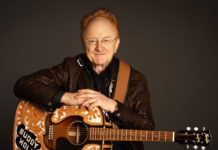Man’s battle with nature has never been more dramatically told than through the true story of building a canal across the Isthmus of Panama.
The dream of linking the oceans – a dream as old as Balboa’s discovery of the Pacific – was first attempted by the French. Lucien Bonaparte Wyse had a great idea: Why not build a canal along the railroad route? He obtained the original concession to build a canal and in 1878 sold his concession to Ferdinand de Lesseps, the builder of the Suez Canal.
When de Lesseps formed a company to construct a canal across Panama, thousands rushed to invest their life savings. But he underestimated the obstacles of climate, disease and terrain (nearly 30,000 men lost their lives in this venture. One of the surviving workers was an unknown French painter named Paul Gauguin).
Shady financial manipulations and misleading cost estimates got the Panama Canal Company into trouble almost from the beginning, the company collapsed, politicians were disgraced, de Lesseps’ officials were sent to jail and hundreds of small investors were plunged into poverty.
Twenty-five years later the United States, armed with advanced technology (for that time) and an effective campaign against the Andes Calopus mosquito (the cause of Yellow Fever), and a handful of heroic engineers persevered against incredible odds to finally achieve the dream.
In June 1902, the United States agreed to buy the concession of the French Company for $40 million if Columbia, which owned the Isthmus, would cede the strip of land across it. A treaty was signed in 1903 but the Colombian government was reluctant to ratify. Angered company agents and Panamanian businessmen plotted the secession from Columbia.
With the support of the United States, the Panamanians revolted and declared Panama a republic. Two weeks later, the United States signed a treaty with Panama agreeing to pay the country $10 million, plus $250,000 a year, for the use, occupation and administration of a 10-mile-wide strip along the canal, 5 miles on each side. The area is known as the Canal Zone. Needless to say, fees for all activities have inflated exorbitantly since that time.
U.S. Army Col. William Gorgas, of the medical group, led the battle against disease, and U.S. Army Col. George Goethals, chief engineer, succeeded where the French failed. The United States took possession of the canal property on May 4, 1904. The first two-and-a-half years were devoted the careful preparation that brought health and efficiency to the operation; the actual construction started in 1907. Goethals was not only the chief engineer, but was also appointed governor of the Zone.
On Aug. 15, 1914, the S.S. Ancon became the first ship to cross the canal. Then the average toll to cross the canal was estimated by the ship size and number of passengers. The lowest toll of 36 cents was paid by Richard Haliburton, who swam across the canal.
The Panama Canal changed the trade routes of the world and allowed ships to pass between Atlantic and Pacific coastlines of the United States, cutting about 8,000 miles from the passage.
It was built across the narrowest part of Panama, the southernmost country in Central America. Panama’s eastern border touches Columbia in South America. Treaties approved by the people of Panama in 1977 and ratified by the United States in 1978 provided for the gradual turnover of the canal and the Canal Zone to the Republic of Panama by 2000.
The Panama Canal is 51 miles long. Ships cross by a system of lock enclosures that fills up with water to raise the ship high above sea level and then empty to lower it again. The canal follows the Chagres River Valley on the Caribbean side and passes thorough the Continental Divide at the Guillard Cut. The upper Chagres River is dammed to form Gatun Lake, one of the world’s largest artificial lakes. The lake is about 85 feet above the Atlantic, and serves as part of the Panama Canal. It is reached by a set of three locks.
The descent to the Pacific is along the Rio Grande Valley. There are three sets of locks: two at Pedro Miguel and one at Miraflores. All the locks are double or in pairs, allowing ships to pass in opposite directions at the same time.
A high mast lighting system is in place and allows for safe night transits. A computer center controls and handles all operations of the canal, and each ship is monitored from a control center by a closed circuit TV. In September 2007, work began to expand the Canal, which is to be completed in 2014.
The government in power during the turmoil of May 1989, with dictator Manuel Noriega, did nothing to impede any ships going through the canal. I was on Princess Cruise Line’s Star Princess going through the canal on that day in May when U.S. dependents were ordered to return home from Panama. The only evidence that something was unusual that day was the presence of a small contingent of Marines sunning themselves on one side of the locks and a couple of Army helicopters hovering overhead on what looked like a practice maneuver. Thirteen-hundred cruise passengers waved and watched the locks open, fill and raise our huge ship over a manmade lake, and then gently lower us back into the Pacific again.
After experiencing the wonder of the Panama Canal, one can really believe that nothing is impossible.
Camille Bounds the travel editor for the Western Division of Sunrise Publications.







